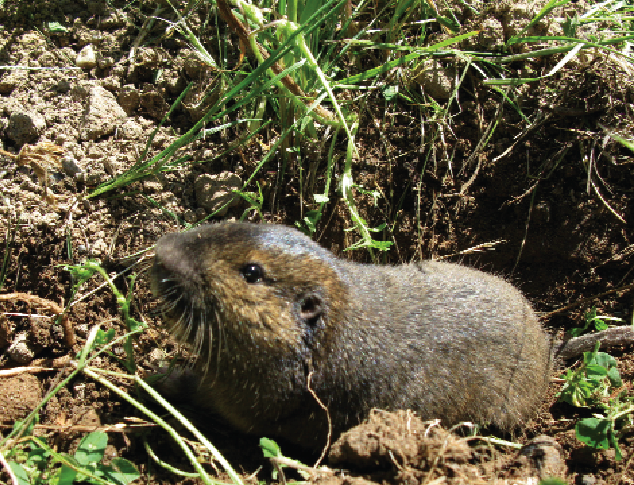Maintain Your Environment-friendly Area: Tackle Gopher Yard Damage Head-On
Maintain Your Environment-friendly Area: Tackle Gopher Yard Damage Head-On
Blog Article
Ultimate Insect Control Solutions for Tackling Persistent Gopher Problem Issues
In the realm of bug control, gophers offer a distinct obstacle due to their persistent nature and destructive practices. By checking out a detailed method that includes understanding gopher habits, utilizing specialized capturing techniques, taking advantage of repellents, and taking on long-term avoidance methods, a course in the direction of effective gopher management emerges.
Recognizing Gopher Habits Patterns
Evaluating gopher behavior patterns offers important insights into their practices and preferences, assisting in the advancement of effective insect control strategies. Recognizing exactly how gophers behave is important in devising effective bug administration plans.
Gophers are delving rodents understood for their extensive tunneling tasks. gopher control. By observing their behavior, scientists have uncovered that gophers are territorial animals, with each gopher generally populating its very own passage system. These tunnel systems offer numerous purposes, consisting of nesting, food storage space, and defense from killers
Additionally, gophers exhibit details feeding patterns, favoring roots, bulbs, and various other below ground plant components. By recognizing their nutritional preferences, parasite control professionals can strategically lure catches or implement repellents that target these food sources, efficiently lowering gopher populations.
In addition, gophers are most active during certain times of the day, usually early morning and late mid-day. This knowledge can assist in organizing insect control activities for optimum efficiency. In general, a thorough understanding of gopher actions patterns is necessary for executing targeted and effective parasite control actions.
Reliable Trapping Strategies
When dealing with gophers, catches are a humane and efficient technique for control. One of the most generally made use of catches is the box trap, which records gophers to life so they can be released elsewhere. It's vital to check traps frequently to ensure trapped gophers do not experience and to eliminate captured gophers immediately.
Making Use Of Repellents and Deterrents
To complement the efficiency of capturing methods in taking care of gopher invasions, homeowner can explore the application of repellents and deterrents as additional tools in their bug control toolbox. Repellents work by releasing smells or preferences that gophers locate undesirable, driving them away from treated areas. Typical repellents consist of castor oil-based products, predator pee, and garlic-based sprays. These repellents produce an obstacle that discourages gophers from entering gardens or digging up grass. Deterrents, on the other hand, aim to make the setting less eye-catching to gophers by utilizing resonances or appear to check these guys out simulate killers or produce disruptions that make the location unwelcoming for gophers. Solar-powered tools that emit sonic pulses or shaking risks can aid prevent gophers from working out in certain locations. When incorporating repellents and deterrents right into a bug control approach, it is vital to follow application guidelines thoroughly and routinely reapply the products to keep their efficiency in hindering gophers from triggering damage to residential or commercial properties.
Implementing Natural Control Methods

An additional natural control technique involves the use of catches. Gopher traps can be put purposefully in active passages to capture and eliminate the pests. These traps are a humane way to control gopher populations without considering poison or hazardous chemicals. In addition, setting up underground obstacles made from wire mesh or equipment towel can aid stop gophers from going into details areas like gardens or yards. These obstacles disrupt their tunneling activities and prevent them from creating additional damage. By combining these natural control techniques, it is feasible to effectively take care of relentless gopher problems in an environmentally friendly way.
Incorporating Long-Term Prevention Techniques
To develop long-term control over gopher problems, it is vital to include positive measures that concentrate on protecting against future events. Carrying out long-term prevention strategies can dramatically decrease the likelihood of gopher re-infestations. One efficient method is to look at this now mount below ground barriers made of cable mesh or hardware fabric around at risk areas like lawns or yards. These obstacles work as a physical deterrent, preventing gophers from burrowing into these areas. Furthermore, routinely evaluating and fixing any read this article kind of existing obstacles can help keep their performance gradually.
Gophers are attracted to locations with abundant food sources like bulbs, roots, and plants. gopher yard damage. By incorporating these proactive steps into your insect control approach, you can create a hostile atmosphere for gophers, eventually lowering the likelihood of future infestations.

Conclusion
Finally, resolving gopher infestations needs a detailed approach that integrates trapping methods, repellents, natural control methods, and long-lasting avoidance techniques. By recognizing gopher behavior patterns and using a mix of these remedies, home owners can effectively handle persistent problems and stop future events. It is essential to consistently keep these pest and keep an eye on control actions to make certain a gopher-free setting.
By discovering a detailed approach that includes understanding gopher actions, using specialized capturing approaches, taking advantage of repellents, and taking on long-lasting prevention strategies, a path towards reliable gopher monitoring emerges. By observing their behavior, researchers have actually uncovered that gophers are territorial animals, with each gopher normally occupying its very own tunnel system. It's essential to examine catches frequently to make certain trapped gophers do not suffer and to eliminate recorded gophers immediately. Deterrents, on the other hand, aim to make the environment less attractive to gophers by utilizing resonances or sound to imitate predators or produce disturbances that make the area unwelcoming for gophers. Furthermore, growing certain plants that gophers dislike, such as castor bean plants or gopher spurge, can act as a deterrent.
Report this page